Corey Miller, Backpacker & Adventurer, Joins The Herd Has Spoken
Corey Miller -- Backpacker & Adventurer Extraordinaire
You know that moment when all your work pays off and you’re finally able to exhale? Brad & Corey talk about the views from the summit after a long challenging hike -- and how that moment can truly change your outlook on life. Corey "Mountain Man" Miller, an avid adventurer, who finds where he wants to go from satellite imagery rather than trail maps -- talks about how you can get started on your journey towards creating your own epic adventure.
Apple Podcasts | Anchor.fm | Breaker | Google Podcasts | Spotify | YouTube
Enjoy the conversation between Chad and Brad
Brad
So you're you're someone who obviously loves to explore and pursue adventure, arguably more than anyone who's ever had on had on the podcast. And that includes some pretty extreme skiers that have joined us. But I'm curious where that sense of adventure comes from. I mean, obviously, you grew up in British Columbia. You live in Kamloops, British Columbia now, which is a beautiful part of the Canadian Rockies for those that aren't familiar. But where is it that this passion to explore and go after new adventures really comes from?
Corey
Well, I guess it all started when I was young. And in high school, every weekend, a group of me and my friends, we would go up in the foothills there. And we would go hiking all day. And that's what we did all weekend. And of course, you know, a kind of lost touch with that when I graduated and got a job. I worked for the railway. And there was really no schedule with that. And I finally quit the railway after 12 years, found a job that gave me a lot of opportunity to do other things because I had a schedule and time off. And I started hiking, you know, small hills. And then one day my friend who lives in the kidneys in a town called Nelson invited me out to come visit. And he said he wanted to go and hike in this peak called gimme peak. And it was in Valhalla. And it was my first mountain hike. And once I got up there, and I saw the views, and it just spiritually did something for me, it lifted me right up. And after that I just wanted to keep challenging myself and like, you know, more mountains, more remote mountains, higher mountains, of course. And then, you know, of course looking on the apps, you know, all trails and things like that looking for, you know, different adventures. And I guess that's how it all started. Well, there's
Brad
So many things here that I want to dig into here. But maybe just to paint the picture for folks that aren't as familiar with British Columbia, or Gimli P. I wonder if you can maybe take a minute to just describe, you know, British Columbia and the Canadian Rockies. In your neck of the woods in terms of what the scene is, is like, just so people get it get a sense of how approachable or unapproachable It is to be able to get outside and get into the wilderness.
Corey
Okay, well, we have NBC. Many different mountainous regions are starting right out from Vancouver, you know, it's an easy 45 minute to an hour drive to get up into the coast mountains. And then of course, like up in the interior, you have the Rockies, and a bunch of other sub areas like the bugaboos the Valhalla has, but either way, it doesn't matter where you live in BC, you can drive, you know, a couple hours or less and be up in mountainous territory.
Brad
Do most people take advantage of that?
Corey
Um, I'd say yes, a lot of people are willing to drive, you know, one or two hours to go to these places. I know some people drive a lot further as well.
Brad
So one of the things that you mentioned in respect to guinea pig, guinea pig, excuse me, a moment ago was how you just felt so much different, right? So you, you gotten into the foothills a little bit as a high school student, kind of kind of screwing around like most of us did. Yeah, you kind of get this moment. We're now you're you're probably mostly an adult. And and you return your turn to the mountains, and you go up to this peak, and you kind of have this, this aha moment. What is that moment? Like? And how does that change your mental outlook after being able to look out at the vast landscape?
Corey
Oh, yeah, that's a tough one to describe. But it is just like, it's almost like, when you're about to fall asleep, you know, it's just the whole weight on your shoulders, the weight of everything is just taken right off, and you're just so relaxed, and at peace in the moment, and just, you know, the visuals, and the scenery is just amazing, beyond, you know, beyond explanation, just, it's just trying to take that all in. Sometimes, you know, I get up there, and I'm in relaxed mode. But then there's sometimes I get up there, and I'm, like a kid on Christmas, you know, waking up. I'm so excited. Sometimes the nights before I can't even sleep, you know, I got maybe one or two hours of sleep, but when you get up there, it's just just enter the sense of accomplishment as well. You know, it's really something.
Brad
And do you feel like you have a halo effect? Right, so, so how is how is Corey for the day, the week after one of those hikes as compared to you? You know, a couple of weeks beforehand, do you feel like it has staying power with you in terms of your mental outlook and disposition?
Corey
Oh, 100% it's like, you know, it's like, my, it's like a happy drug really, you know, like, it's a happy place. And it's a recharge of, you know, you know, a mental being and everything, it just, there's something about it that just, you know, put your right back up on the pedestal and recharges your soul. You know?
Brad
Yeah, yeah. No, I know that feeling. And, you know, the first time you really get a chance to go up in the mountains and you're truly in wilderness is, is I feel like a first time that you'll you'll never really forget. And it's funny to hear you kind of reference that that first first time moment. Again, as an adult to as you've evolved in you go to you go on just a ton of fantastic adventures now. And to track Corey please check them out mountain man underscore Miller at on Instagram, as you've evolved, do you find that that you want to go up and explore solo? Or do you like to have a partner? Or do you like to be in in a group like, what, what's sort of the ideal approach to getting away these days for you?
Corey
Well, most of the time, I do hike solo, it's not by choice. It's just, you know, it's difficult to get people's schedules line up with work, family life, that kind of thing. But preferably, I would like to do, you know, a small group, you know, three to four people. That's usually a new ideal, especially, you know, there's pike in Grizzly territory, you know, I can numbers but I would say you know, three to four As an ideal number to hike with, you know, when you get the bigger groups, of course, then you have issues with people's different levels of athleticism and abilities. You know, but when you're a smaller tight group, you kind of know each other's abilities and, and, you know, everyone can agree a little bit better, you know, big groups, sometimes you have people not that agreeable, and have, you know, other things that they want to do or other ideas and they want to do it their way, you know,
Brad
Two's Company, three's a crowd, they know that, that starts to inject a lot of steroids, the the bigger and bigger group, you, you get out, I totally appreciate that. One of the things that I think is really interesting, about, you know, just kind of following you know, as, as a, as a great supporter of MuskOx and following your, your Instagram feed again, mountain man underscore Miller, but is the fact that you tend to do a lot of day hikes. And you do things really, really aggressively during those days, but it feels a little bit more approachable, maybe to the average person. So I'm curious if I'm, if I'm reading that correctly, in terms of what you're what you're doing, or if it's just sort of by definition, you go on more day hikes, because you can do five in five days versus you go on one big five day hike. And it's only it's only one hike. So for you, you know, what is it that you're looking for? When you're going out on a on a hike? And do you? You know, do you like to pursue the longer trips? Or do you really love to see how far you can push yourself in one day?
Corey
I guess it's really, you know, well, the reason why I do mostly day hikes is because there's less planning. And of course, your backpack is a lot smaller. And like you said, you can, you know, you can travel a lot faster and hike a lot more peaks. And you can if you're backpacking, you know, because sometimes it takes, you know, three, four days to get to your objectives and whatnot. But I would say that, I don't really look at distance, although I do kind of have a threshold where I like to stay kind of below 30 kilometers for a day hike. And, you know, and around 2000 meter cumulative elevation gain, although I have gone over that, but I could definitely feel it afterwards. But yeah, I would say, you know, my ideal hike is probably like 15 to 30k. And, you know, roughly around 1200 meter elevation gain. But I've definitely, sometimes the smaller and shorter hikes are, you know, pretty appreciative for those links to,
Brad
yeah, love it. There's, there's a lot of great variety here. But what I really love about your hikes based on my understanding is that you're not one of these people that says, hey, let's open up all trails and just go ahead and do with the most popular trail is in this area. You're one of these people that uniquely says, Let's give me a topo map. Let me look at things first. And I'm going to figure out where I want to go. And yeah, I'm going to see if there's any resources out there. But if there's not, I'm not going to be turned deterred at all. In fact, I'm going to be encouraged, I'm going to find a new trail. And it might mean that I'm doing a whole bunch of bushwhacking, but I'm going to get up to the peak that I that I want to, and I'm going to chart my own course. How did you how did you come to, to develop that mentality? And why do you think it is that so many people are our, I don't want to say intimidated, but they're just not quite ready to take that leap of faith where they would be creating their own trails to the peaks on a map?
Corey
Well, I guess it starts out, you know, people are used to the trails and not familiar with, you know, navigating them themselves, you know, or not having a report to go by. And, and that can be a little intimidating, you know, being up there and getting lost. Though there are a lot of people that just, you know, just stick to the trails and reports and stuff like that, but how, that's how I started to but then I like you said I wanted to start venturing further out where less people have traveled and if not, maybe no one has traveled. And I would just sit on Google Earth and use the feature Google or 3d and I would literally sit on my couch and look at Google or 3d for hours, and just zoom in and see a mountain that's got some beautiful lakes around it and look at it be like, wow, you know what I want to be there. So then I would look at, see if there's, you know, a logging road close by or something like that. And then check out the elevation using this other app is called the Ranger. It's got like contour lines and everything like that. That's what I use to plan my route, plot my waypoints and whatnot, look at the elevation to see, you know, okay, how high up does this logging road go. And then I kind of look for a ridge to see, you know, and plot my route. And then I look at it, and it can show like, the elevation, the steepness, and the grade. And that's how I kind of started out and kind of started just like playing around with smaller hikes like that. And then, you know, of course, there I've had gone have gone through some, you know, trial, it's trial and error, there's some place sometimes I've, you know, mapped a route and got up there, and it was, like, you know, completely blocked off by another big, huge, massive Canyon. And I've had that before, but you know, you'll learn and learn to adapt and use the, you know, the contour lines, and even like the Google Earth 3d, you can kind of get, you know, it's, I mean, it's not the greatest when you zoom in, but you can kind of have an idea. And once you've been using it for quite a while you can look and you know, things that I look forward to is like, face and trees, you know, if you see a lot of trees, you know, before, like, here's an example, I see a lot of trees. Oh, you know, I can go through that. But then when I get up there, there's so much deadfall you know, it's like, there's no way we're gonna make it through there. Right. You know, and, and also, like, another example is, you know, I'm like, I look and see below this mountain. Oh, yeah. Looks like there's a bunch of rocks there. But of course, you know, you get there, and they're huge car sized boulders that you got to hop for four kilometers. You know, it's interesting, but I've definitely have gotten a lot better with it. And, you know, last year was one of my most memorable hikes. It was the driver cones. Yes, yes. They're, I don't think like, I haven't seen any trips, reports or anything up of there. And I was just, I just went out there one day. And it's a small old I guess a ghost town used to be actually one of the biggest towns in BC when the back in the Gold Rush years.
Brad
Place called gold bridge. Correct. My do I my jacket?
Corey
Well, bridge, and now it's population, I think 46.
Brad
There's 46,000. Right, Corey? Yeah.
Corey
Yeah, no, it's a small town now. And, you know, I drove out and did this one hike, and it's called glacier view peak. And there wasn't much on it. But I just managed to, you know, pull out Google Earth 3d. And my app that I use for plotting my routes, and found a rich from the logging road. So I managed to get up there and was in the Alpine and, and made my way to the top of this peak. And way off in the distance, I could see just this giant ice field with just you know, this big moraine lake and the icefields is coming down. And it was just, it was huge. It was way as high as you could see. And it was quite something. And when I said to myself, I got to be up there. You know, there's I got to find a way to get up there. And from where I live, it's about a six hour drive. So of course, I drove out there again, because there's so many canyons coming from these glaciers that you know, they're not just rivers that you can walk across are actually Oh, straight drop off like a 90 100 feet. So I tried looking for any logs or bridges or anything. I even brought my drone out there flew my drone out there. I went up there a couple times couldn't find anything. And I figured, well, you know, I don't think I'm going to be able to make it there because there's no way across. And I was sitting at home one day and I looked, I saw some a little line across the video that I take with my drone that's going across the creek. I said what is that that's not a log, there's something out there. So again, six hours to drive out there just to check and see if what this line was in Of course, you know, I used my Google Earth and my map app to find out and pinpoint where it was. And I got there. And it was a troubled trolley car. And, you know, so I checked out the, you know, of course, the cable and it looked like the cable was brand new and all the bolts and stuff was brand new, but obviously, that the cable car itself was fairly old. I'm pretty excited about this. And I got home and I messaged one of my friends and I said, Do you want to go on an amazing hike up to the little wet ice fields to the bridge glacier in my friend said, Yes, let's do it. So we've made a big plan. And I mapped everything out what we're going to do on day one, you know, hiking in setting up camp. And then you know, day two, going down to the foot of this glacier, which was just this is huge, you know, doesn't look that big, far away. But when you actually get there, and you're standing beside it, and it's like this, you know, 1015 storey, massive glazed, you're just coming into the, into this big, huge, beautiful lake. It's, it's really something. And, of course, the third day mapping out a peak, where we are literally surrounded all around us by these big, massive glaciers. And it was just amazing. You know, I don't think anyone's ever been up there was no signed footprints, no fire pits or anything like that. It's just a place where we set up can't just have the sub Alpine there and there must have been 2030 beautiful Alpine lakes. And watching the sun come up in the sun go down. It was this the most spiritual thing I've ever experienced in my life. I mean, we worked for, you know, hiking in there. It was a bushwhack it was thick. And, you know, my friend's legs cramped right up. And he was like, all upset because he hikes all the time too. But, you know, he's like this never have different type of hike. Exactly. And we ran out of water. And so you know, of course, I pull up my app, and I look and looking for a water source. I'm like, Okay, well, we just got a little bit longer to go. And we can, you know, I've got a MSR water pump, we can use that. Fill up your water. And, yeah, so we, we found the lake Aaron, filled up with water. But yeah, it was really something up there. You know. And I would have never been able to do that if I didn't start pushing myself and mapping my own routes. And
Brad
yeah, so. So Corey, what would you recommend to someone that's super intrigued by with your content online, and maybe listening to this podcast, but at the same time, they're, they're a little bit intimidated, because this is a lot that you just described, what would be your advice to them in terms of how to get started, and what next steps would be?
Corey
Well, just like I did, you know, get an app where you can plot routes. Learn, maybe take a, you know, a course in orienteering, just to learn the basics, you know, the, learn what the contour lines are, learn how to, you know, look at contour lines, and see what the difference is, what a ridge looks like, and what a valley looks like, you know, and just start plotting routes around, you know, somewhere close by, and, you know, getting used to the app and getting used to plotting routes, following the route and, and just going through from there, and start, you know, and then start challenging yourself going further out Claudin different routes, you know, or even just start, you know, use the app, and just plot a route that's already got a trail, but just use the route to follow, you know, and get and get used to that. And, of course,
Brad
yeah, I love that. Because, you know, for, for someone who's new into this, right, it'd be really nice to have a trail map to sort of default to so you can, you can keep that in your in your pack. If you absolutely need to, you know, it's I know it's there, but you can do without it and you're gonna start to gain a little bit more confidence every time you do it, and you get out there and I think one of the best things is that you're you're not limited to what other people have figured out before when you do this. And that's that's by no means to poopoo getting out there on trails that exist, because I think in so many cases like hey, that's that's the right way to do it. And we don't want to walk over you know, too many things you want to keep nature as it is. But these sorts of new adventures, it really does open up a whole lot of new opportunities which which is super exciting, but There's a big, but on the flip side, when you're out there, you know, backpacking or hiking, there are some dangers and some risks associated with that. So what are the biggest risks for you, as you're going out there, and pursuing these, these new adventures that you're taking into account, as you're exploring?
Corey
I would say there, there are quite a few risks. Depending where you are, you know, a lot of places I come in Grizzly territory. And, you know, there's the risk of coming face to face with a grizzly bear. You know, I haven't come face to face with grizzly bear yet, and I've been hiking for about four years. And you know, knock on wood. But you have to know what to do. And you have to be prepared, obviously, you're going to have bear spray. But you, of course, want to teach yourself or learn how to use the bear spray, before you get out there. Because, you know, a lot can happen in a split second, when you're especially, especially when you're in panic mode. And so you know, that's one of the risks, but you just don't think too much of it. Because, you know, people start thinking too much about, you know, bears and a scare themselves, and then they don't want to go unless they're with someone else. You know, if you make if you make noise, and let them know that you're around, you know, that's what I do. And I mean, I've been hiking for four years, like I said, I haven't seen a grizzly bear yet. And I've hiked a lot of grizzly bear territory. I've seen lots of signs them as well, you know, I look for rocks that have been freshly flipped over, you know, logs that have been freshly ripped, you know, tracks, scat, you know, you just look for those kind of things, make yourself aware that, you know, there is something around there, and then you just start making a little bit of noise and a little bit more intuitive and listening to your surroundings. Also another risk is, of course, you're by yourself, breaking an ankle, a falling, twisting an ankle, something like that. You know, and something that I recently got was a GPS satellite communications device, which, of course, puts my mum at ease. Haha,
Brad
I was gonna keep mom happy.
Corey
Oh, exactly, she would always dread me going out there. But now, she has a means of contacting me. And, you know, I can contact her whether I'm in cell range or not. And I can also, you know, call for help with the push of his button If I was to fall or break my ankle or something like that. And I not able to get out of the booth by myself. You know, that is a big thing right there.
Brad
Yeah, no, it's a huge deal. And it summons a thought to me, which is a pretty mainstream thing now, which is the TV show alone, which I have to imagine that you had you had a chance to see but level as there is. Is that something that that you'd be? You'd be into participating in? someday? I know, it's it's in the Canadian Arctic. So it's in some ways in your in your backyard. But in other ways? That's a long way north from where you are?
Corey
Yes. Yes. I would love to be in something like that. I actually had an interview for something like that. Oh, I think it was a couple years ago. And it was something similar to a loan, but I don't know what happened with them. Because I did not see it air. When it was I can't remember what the what it was going to be called. But yes, I definitely would be interested in something like that. You know, it'd be a great experience to do that. Oh, yeah.
Brad
Absolutely. Lots of dangers out there. And I know, one of the things that they do is, hey, they've got they've got that satellite phone like you like you reference. So bears are big, being able to have you know, communication, just in case something happens is, is you know, whether, whether,
Corey
like, I pack stuff, you know, emergency blanket, first aid kit, all that kind of stuff, and I plan, a pack that if I had to I could survive the night, you know, you got to plan for just in case some some, you know, stuff does happen and if you have to stay the night, it's best to be prepared to not, you know, and always let people know, you know, couple friends and family where you're going. So you know if something does happen, you know, they can send for help or they know where they know where you're Kind of an area where you are right?
Brad
Absolutely. Absolutely. Well, you're obviously very experienced hiker going after some amazing adventures again, if you want to follow along with Korea's adventure mountain man underscore Miller on on Instagram. So please give give Korea a checkout and probably a follow up to. Because I think it's, it's it's well worth it. Well, yeah, Corey, we appreciate you sharing quite a bit here about your, your stories and your experiences before before I let you go. A couple final questions for you. Number one is when you're out there, backpacking, what's your number one biggest pet peeve whether you're on the trail or your bushwhacking.
Corey
I do have a big one, and I'm pretty sure everyone else can vote for this is garbage. You know, you're walking a beautiful trail, you're out in the beautiful nature, and then you see garbage on the side of the trail. You know, it's just so easy to put that garbage grab that garbage, you know, put it in your pocket. But yeah, I would say garbage. And another thing is music. You know, I mean, don't get me wrong. I know people like to go on the trails and like to listen to music and stuff. But there's also some people that like to go out there to get peace and quiet, you know, right. And when I'm walking a trail, and I hear blasting rap, not that I have a thing about gangsta rap, but, you know, distant as example. That's one of my pet peeves, too. Yeah, no, I
Brad
can totally appreciate that. We want a pristine environment. And that means the wildlife that are out there, that means just not having it full of debris. And that means not having, you know, audio contamination, regardless of what what the type of music is totally, can can appreciate that. On the flip side of maybe sort of annoyances, looking to some events, maybe a little bit bigger picture, what is the greatest piece of advice that you've ever received?
Corey
Boy, the greatest piece of advice I ever received, was probably, if you're not comfortable, going forward, and you're having doubts. Turn around. Don't take the chance. You know, when I've been up in the mountains, and I got into some sketchy terrain, and going on a rich and it was really windy. And, you know, I was just starting to have doubts about myself. And, you know, Should I turn around, but I'm so close, I'm so close, I can be there, you know, 20 minutes. It's not worth it. You know, it's not worth your life, you can always come back to that height again. But that was the best piece of advice I've ever had is if you're not comfortable, and you're having doubts about yourself, don't push it.
Brad
Yeah, I think that it's okay to turn around. Such good advice. And frankly, I think that that applies to so many things in life outside of hiking as well. It's like, trust your gut. Because there's a lot of wisdom that's baked in there. And sometimes you can't necessarily always articulate it and you could you can rationalize why you shouldn't follow it. Oh, it's only 20 minutes away or, oh, I've heard you know, other people said good things about this person. Or I really think if I you know I could I could take it on one more thing, but if your guts are telling you that's not a good idea, it's a good idea to just pull up and hold off from doing that. Yeah. 100% Well, listen, Corey we're super excited to have you part of the MuskOx Herd. I can't wait to see your next adventure. Again, @mountainman_miller on Instagram. And yeah, again, we appreciate you being part of the muskOx Herd. Thanks for joining us today.
Corey
Oh, thanks for having me. I appreciate it. had a lot of fun.
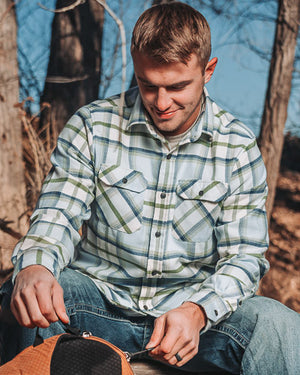
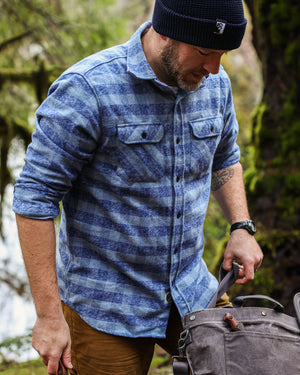
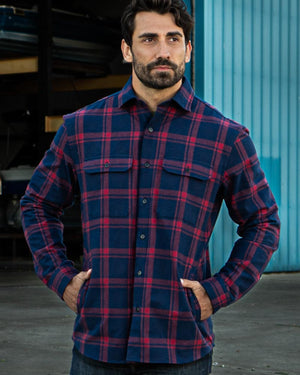
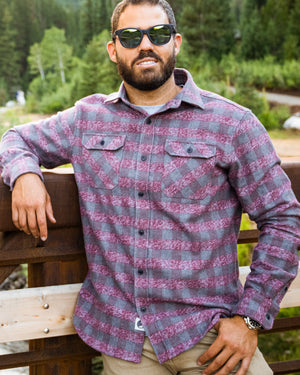
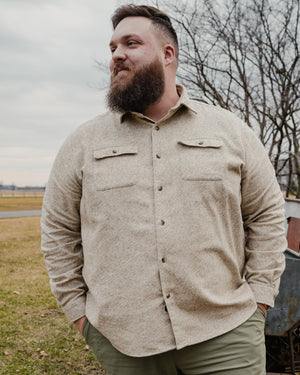
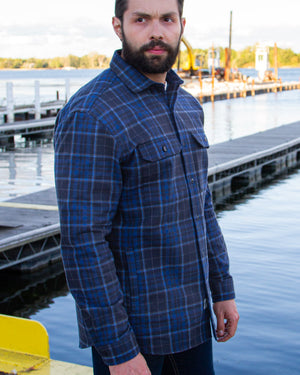
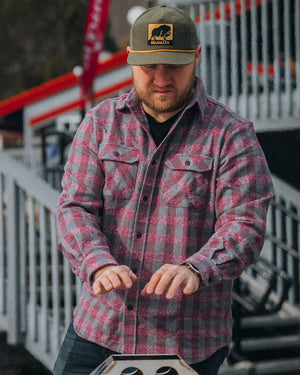

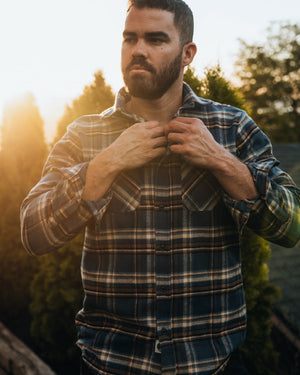
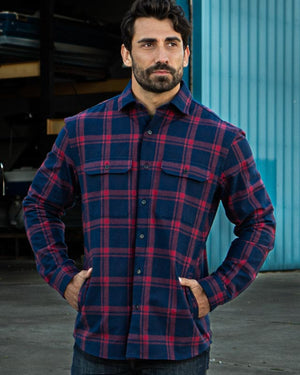
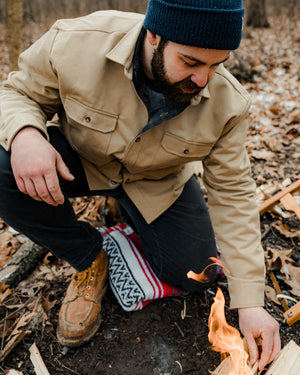
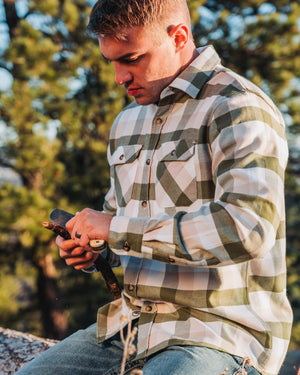
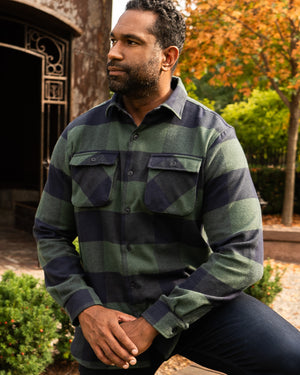


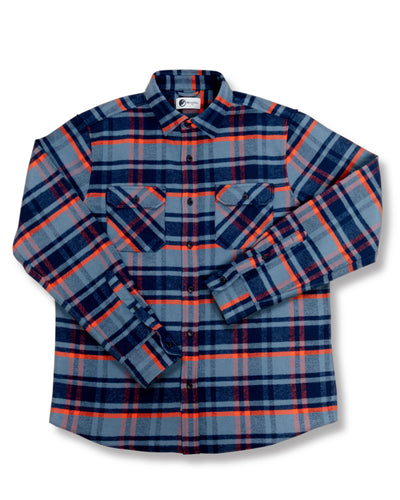

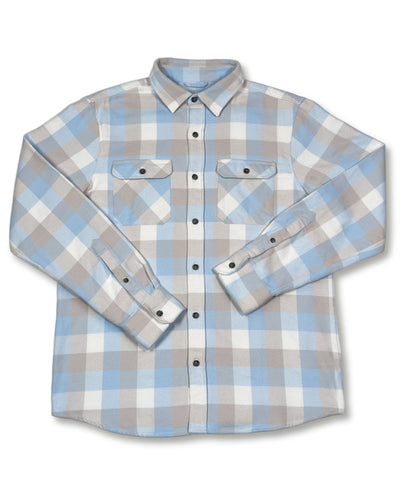
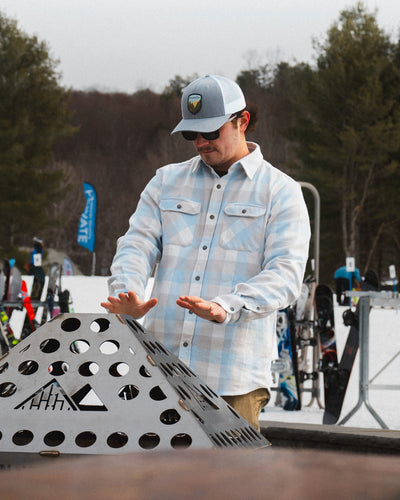
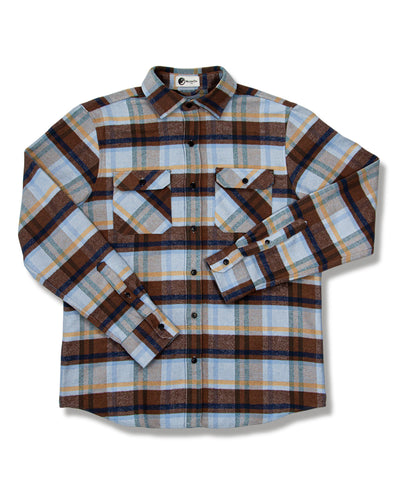
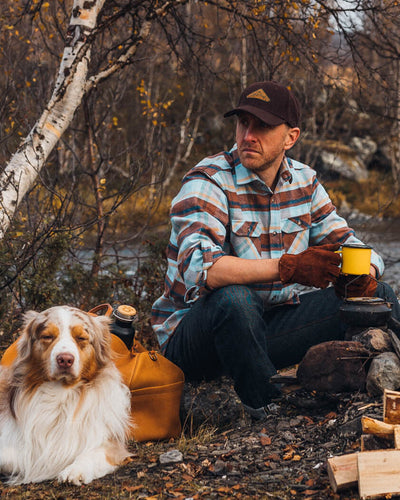
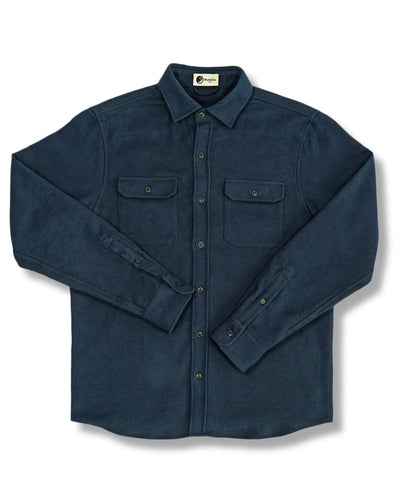
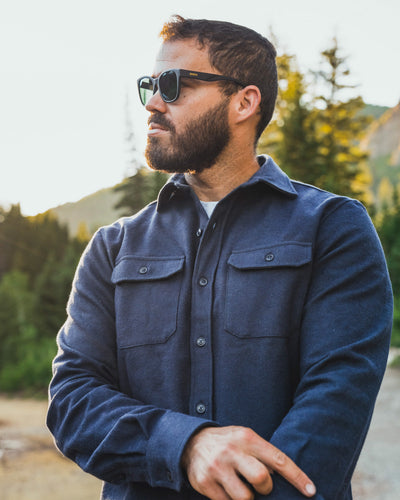



Leave a comment